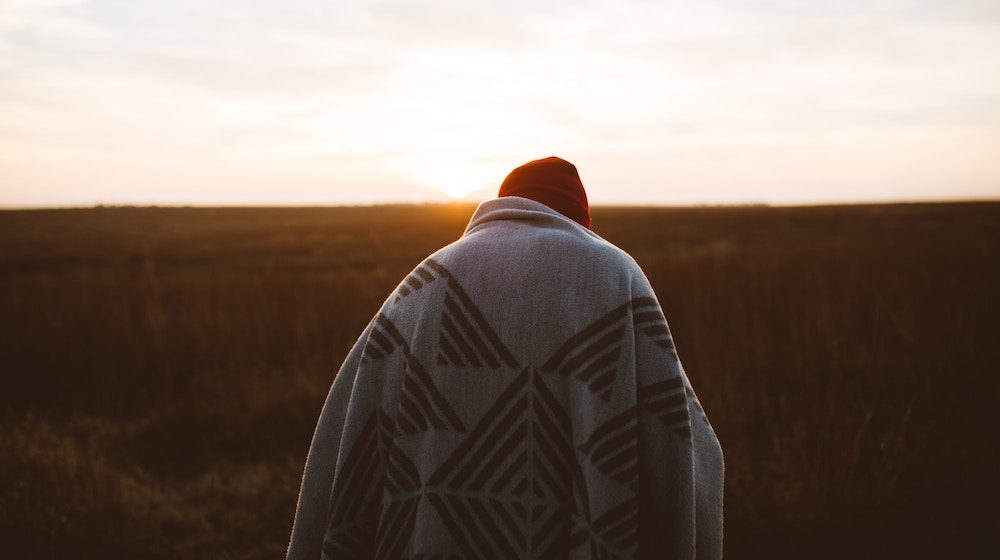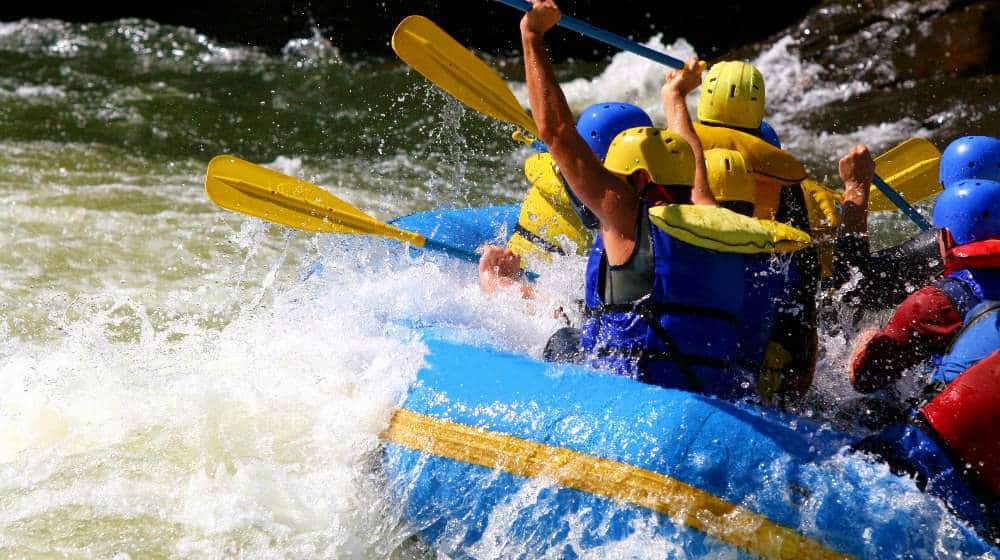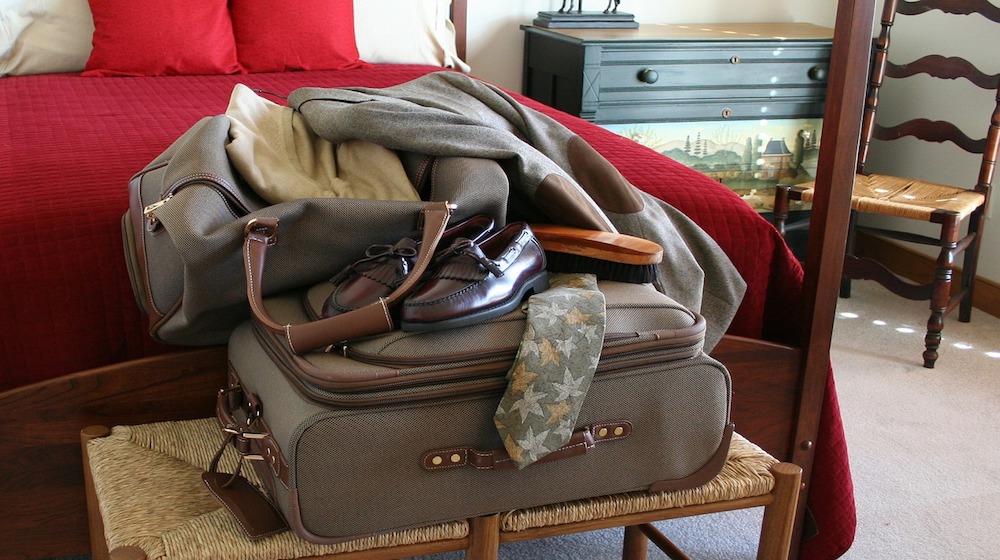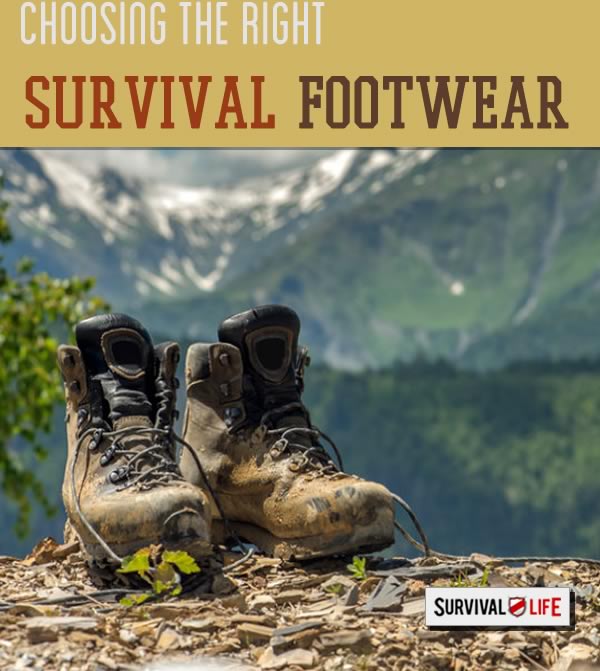Evacuation Planning
Security Blanket?

A few energy bars, some water should and an emergency blanket should be all you need to survive a night on the trail right?
Wrong!
An emergency blanket is great to have, but make sure you realize that it is not a fool proof way to stay warm. Make sure that you understand its limitations.
In first aid these blankets are used to prevent or counter hypothermia. They do this by utilizing three key methods of heat retention:
-The airtight foil reduces convection
-Heat loss caused by evaporation of perspiration, moisture or blood is minimized by the same mechanism
-To a small extent the reflective surface inhibits losses caused by thermal radiation.
These “space blankets” have been marketed as emergency or survival blankets for years and while they can save your life they do suffer from some fatal flaws that are rarely ever discussed.
The main thing that most people fail to realize is that emergency blankets only serve to reflect heat back to the body. Unlike a wool blanket, the emergency blanket does not have any insulation to trap air and keep you warm.
There are 5 ways in which the body loses heat and an emergency blanket is really only useful against one of them:
Convection
When the wind blows against skin or wet clothing, the cooler air will literally strip body heat from you. This is what is commonly known as wind chill will cause you to become much colder.
While your space blanket will effectively block the wind from touching your body, you will still lose a good deal of heat as it passes over the exposed blanket.
Conduction
Heat will be lost through contact with any surface that has a lower temperature than that of your body.
If you wrap yourself up in an emergency blanket and then sit on the ground, your skin will be in contact with the blanket which then touches the ground.
You will immediately begin leaching your body heat into the ground. This falls back to having proper insulation. The only way to lessen or prevent this is to keep your rear end insulated from the frigid earth. Put down a bed of pine needles, dead leaves, or if you have it, foam padding. If you end up stuck outside on a cold night this will make it just a little more bearable.
Radiation
Heat is lost through radiation from all over the body. As we are warm blooded, our bodies work to maintain a 98.6 degree core temperature. This is the least significant factor of heat loss. Your clothing, hats and gloves all serve to block heat loss from radiation.
This is what space blankets were designed for and is the most effective method by which they will protect you.
Evaporation
Heat is lost through the body’s natural cooling system (perspiration) which evaporates from the skin and clothing wet with sweat, melted snow, rain, stream crossings and more.
Even in the coldest weather, you can start to sweat with enough exertion. Your body will naturally need to regulate its temperature but a strong cold wind
A space blanket is completely water proof. This is great for keeping water out, but the problem is that any water inside the blanket has nowhere to go.
If you spend a night under an emergency blanket, you are likely to start the morning of with soaking wet clothes, leaving you susceptible to hypothermia.
Not a good start to the day in my book.
Respiration
The last way in which heat is lost is through respiration (breathing). As you exhale your breath carries away body heat. You can prevent much of the loss by covering your mouth and nose with a scarf or a mask. You may need to stop, stay in one sheltered place and limit your heat loss from heavy breathing while trekking through the cold.
Emergency blankets may have some serious faults with their intended purpose but what they lack as a blanket they more than make up for in alternative uses. Namely:
-A signal for rescuers to find you
-A way to catch and store rain water
-A waterproof poncho
-A trail marker so that you don’t end up walking in circles
-A wind break for your shelter
-A heat reflector if you build a camp fire
Having an emergency blanket is essential to have in your gear.
In fact, not having at least one of them is stupid.
They take up no space, weigh next to nothing, and typically cost less than $5.00.
Just don’t make the mistake of traipsing off into the woods with only a light jacket and a Mylar blanket
That false sense of security can get you killed quickly.
Make sure that you know what to expect when you are leaving and pack more than you need.
Can you think of any other uses for an emergency blanket?
How about alternative methods to keep warm in a survival situation?
Leave a comment below and let me know!
Warm a Room with Only a Candle and a Few Terra Cotta Pots
Stay Warm in the Winter | How to Heat Your Home
Generating Body Heat | Staying Warm to Survive
-

 Do It Yourself7 months ago
Do It Yourself7 months agoParacord Projects | 36 Cool Paracord Ideas For Your Paracord Survival Projects
-

 Do It Yourself9 months ago
Do It Yourself9 months agoHow To Make Paracord Survival Bracelets | DIY Survival Prepping
-

 Do It Yourself9 months ago
Do It Yourself9 months ago21 Home Remedies For Toothache Pain Relief
-

 Do It Yourself10 months ago
Do It Yourself10 months agoSurvival DIY: How To Melt Aluminum Cans For Casting
-

 Exports8 months ago
Exports8 months agoAre Switchblades Legal? Knife Laws By State








Christina
January 10, 2013 at 8:39 AM
Hello 🙂 I love your articles 🙂 On ebay you can buy pocket hand warmers. Some pharmacies sell them too. Some are pouches that you shake and they get warm for up to 24 hours. And some have lighter fluid in them which I’m not sure if that’s safe or not
Joe
January 10, 2013 at 8:56 AM
Yeah I love those things (I actually had them on one of my Christmas wish lists) They also have reusable hand warmers that you just boil when they cool off and they are good to go again.
Brett Woern
January 10, 2013 at 4:57 PM
I love my lighter fluid hand warmers. They’ve been around a long time. They use a platinum based catalytic process to turn the fuel to heat without a flame. They work great in a pocket or inside your jacket. You use a lighter (for a few seconds) to heat the catylitic head to start the reaction – after that, it’ll run until the fuel runs out – up to 24 hours on a single fill-up. I understand that the catylitic head can wear-out over time, but I’m still using my originals.
Zippo makes my favorite unit. I’ve seen some older ones by Jon-E and I’ve a got a couple that were made in China.
Note: they all come with a little velvet bag. I believe this has a purpose – with the heater inside, the bag limits the air-flow to limit the heat. Without the bag, the heater might get dangerously hot. I hang the bag from a lanyard around my neck, with the heater laying against my chest – nice core heat and it’s easy to move to a pocket or to place on a cold kid!
Quester55
January 22, 2013 at 8:30 PM
Christina, Before you spend a lot on those Hand Warmer Packs, you Shack to get started, buy some & test them out for yourself, Some last an hour or two, But rarely do they last as long as they say.
As for those S/Steel flask looking hand warmers, If you follow the Instructions to the Letter, Keep the Unit in it’s Felt Bag, when operating & Never Tip it upside down when lit, It’ll keep part of you warm all day. As for those Charcoal Stick Hand warmers, , Maybe you’ll have better luck than I ever did, In the end, I just got use to wearing Wool EVERYTHING & a Heavy REAL AIR-FORCE ARCTIC Fur Lined, PARKA & Enjoyed Ice-Fishing on ” Eight Point Lake ” Michigan!
Al McLennan
January 10, 2013 at 9:41 AM
Most of the small hand warmer packs provide heat only for about 4 hours and the reusable ones are good for about 15-20 minutes. A good way to use mylar emergency blankets is to unfold completely, and stuff it into your shirt (like you would do with dry leaves). This way the material will actually trap some heat, help block wind and radiate some of your body heat back to your body. Make sure you keep several “blankets” in your EDC or BOB because one is never enough.
Peter
January 10, 2013 at 2:27 PM
Thanks Al. Great idea! I’ve got a Mylar blanket in my B.O.B. already, but I’m going to get a couple more. They have so many uses as stated above and they are so inexpensive it makes only good sense to have a few in your kit.
Joy
January 10, 2013 at 2:30 PM
Your survival blanket isn’t just for camping, either!! I put them over my windows at home during the summer to reflect heat back out of the house while the AC is on. They’re thin enough to still see through if you have to, and they work great. Its a cheap, easy way to summerize your windows, especially with a south, southwest, west exposure like I’ve got.
Richard Redmond
January 10, 2013 at 2:59 PM
Dig a hole. Drape the emergency blanket over the top. Put a small rock in the center to make an upside down pyramid. Place a cup under the rock/blanket. You can get clear drinking water from the condensation dripping into the cup.
Frank
January 10, 2013 at 3:47 PM
I carry wood shavings, like what comes off of planer, soaked in parafin, a great fire startes, light weight and little space. The Bic lighter goes along in another zip loc bag.
tom Kelly
January 10, 2013 at 6:42 PM
an esbit folding stove costs less than $5 and fits in a pocket.. the fuel works alone as an fantastic fire starter in any weather
lora hubbel
January 10, 2013 at 8:37 PM
so if I had a wool blanket AND a foil blanket…would I wrap my grandson in the foil blanket FIRST or the wool FIRST and then the other?
Lazarien
January 23, 2015 at 5:55 AM
I would suggest wool first and the foil as an outer layer
A) wool is more confortable next to skin
B)the foil will reflect the heat back, so the hotter the inside the more heat it reflects back on it, woth the wool as an inside layer you get extra layer, so more heat.
C) wool is breathable so it should be no problem to put it inside the foil, it will prevent condensarion if it gets too hot inside.
D)yes, wool insulates whe wet, but its heavy and noone likes feeling like a walking water ball, the foil is waterprooff and does not absorbe water
Of course, this is just my opinion, I could be wrong and really I dont see much agains doing it the other way around either. If anyone knows just let me know
Irish-7
January 10, 2013 at 10:37 PM
Great points about the “Space” blankets! They are much better than having nothing, but insufficient to rely on as a sole source of heat retention or protection from the elements. After a lengthy career in the Combat Arms divisions of the military (considerable time outdoors), I recommend to dress appropriately as the first measure of hypothermia prevention. Much of your body’s heat escapes from your extremities, so a hat, gloves and insulated boots is a great start. A winter coat, parka or even ski jacket with multiple pockets can save your life! Stuff the pockets with survival essentials: space blanket, lighter, wp matches, Swiss Army Knife or multi-tool and a pack of tissues (tinder). You can even buy a small flint/striker for your key chain. Having these few items prepares you for potential exposure to the elements.
Marine4Ever
January 10, 2013 at 11:25 PM
@ lora hubbel — wool blanket first; foil blanket to the outside.
Larry
January 10, 2013 at 11:38 PM
A great newer product is the SOL EMERGENCY ESCSPE BIVY. My wife & I are planning on getting 2. One for each of our BOB’s. Not the cheapest, but the best option. It will keep you warm enough, but also is breathable. Just came out in 2012. SOL also makes emergency blankets, etc.. as well as other survival items. The reviews on the Emergency Escape Bivy were great. It has been said to be one of a kind item, nothing offers the same features. At only 8-9oz (if I remember correctly) its light weight and small size are a plus.
Ken
January 11, 2013 at 3:33 PM
If you’re in a decidious forest,build a sapling-frame shelter.You then stuff it as full as you can with fallen leaves.Stretch the mylar sheet over the shelter frame and secure it.Then when you are ready to sleep,burrow backwards into the middle of the leaves,and sleep.The leaves act as air traps and insulation,the space blanket works as a water-proof covering,cuts the wind,and reflects heat.You can do a variation of this utilizing the fallen tree style shelter.This is when you cut down a small pine tree (not all the way through so that the butt is supported about 2-3 feet above the ground),cut away the branches on the underside,and stretch the mylar sheet over the fallen tree.If there are aspen trees,or cottonwoods around,stuff the shelter full of leaves,and use as above.In cold weather,wear wool.Synthetics won’t keep you warm when wet.Wool can.Wring out the water,put back on–viola!
Great Grey
January 12, 2013 at 2:14 AM
I said for years that two emergency blankets for one person is the minimum that anyone should have with them. One for shelter (wind, rain,snow) and one to keep warm with. Yes, proper clothing is a big help but, when somebody goes for a day hike they leave the heavy jacket behind, when it turns in to an over nighter no jacket.
I have camped where it was about 110 in the day and low 30s at night, so somebody that’s not planning to out that long tends to leave the cold weather clothing behind.
Beverly
January 15, 2013 at 8:10 PM
I use an emergency blanket (cheap ones) under my mattress pad, yes it makes some noise but it keeps me warm all night after the first 5 minute warm the sheet time. I keep my house in the low 60’s to save money and this has given me a toasty warm sleep.
There is the shiny side and the plastic side to these and the metal shiny side goes toward you. However, as of today I still cannot tell which is which until the metal particles start to come off.
Also, I haven’t tried it yet but as winter progresses, I plan to cut one to fit my shoes insoles (the cheap ones from Walmart) and attach it to that and then insert into my boots. Years ago they used cardboard and tinfoil.
In addition, I have tried those disposal heaters in my bed and they only spot heat for example you have to have your foot right on it because it does not spread it. Where as those chemical heaters do radiate heat but have a smell.
Quester55
January 22, 2013 at 8:52 PM
I was digging around in some of my old contact Files & came up with some Great Leads for you all to Look up for making some of your own B.O.B.S..
FoamKing.com, A great source for All types of Foam Products including ” CLOSED-CELL FLOTATION & INSULATION Foam Sheets.
Cheeper-than-dirt Dot Com, Great for Jungle style sleeping bags on the cheap.
Paladin press, Books on almost any topic for bugging out & Firearm care.
Bruce O'H.
January 24, 2013 at 7:52 AM
I’m wondering if the emer blanket would hide your heat signature from, say, airborne thermal detectors?
Robert
February 11, 2013 at 5:59 PM
Would it be possible to ad a “Print” to your articles as I would like to print them out and keep them for future reference and thee are others who would liek to do the same
Thank you
Robert
Joe
February 11, 2013 at 6:27 PM
Absolutely Robert this information is best used in practice but when TSHTF its better to atleast have it printed off than to stare at a blank screen!
Go right ahead and print them.
Joe
Tracey Burdett
September 18, 2014 at 4:05 AM
I use my space blanket under my air mattress when I go camping. A friend suggested it, I tried and it seemed to make a difference. I have to agree with you about always packing one or two, they do make a difference.